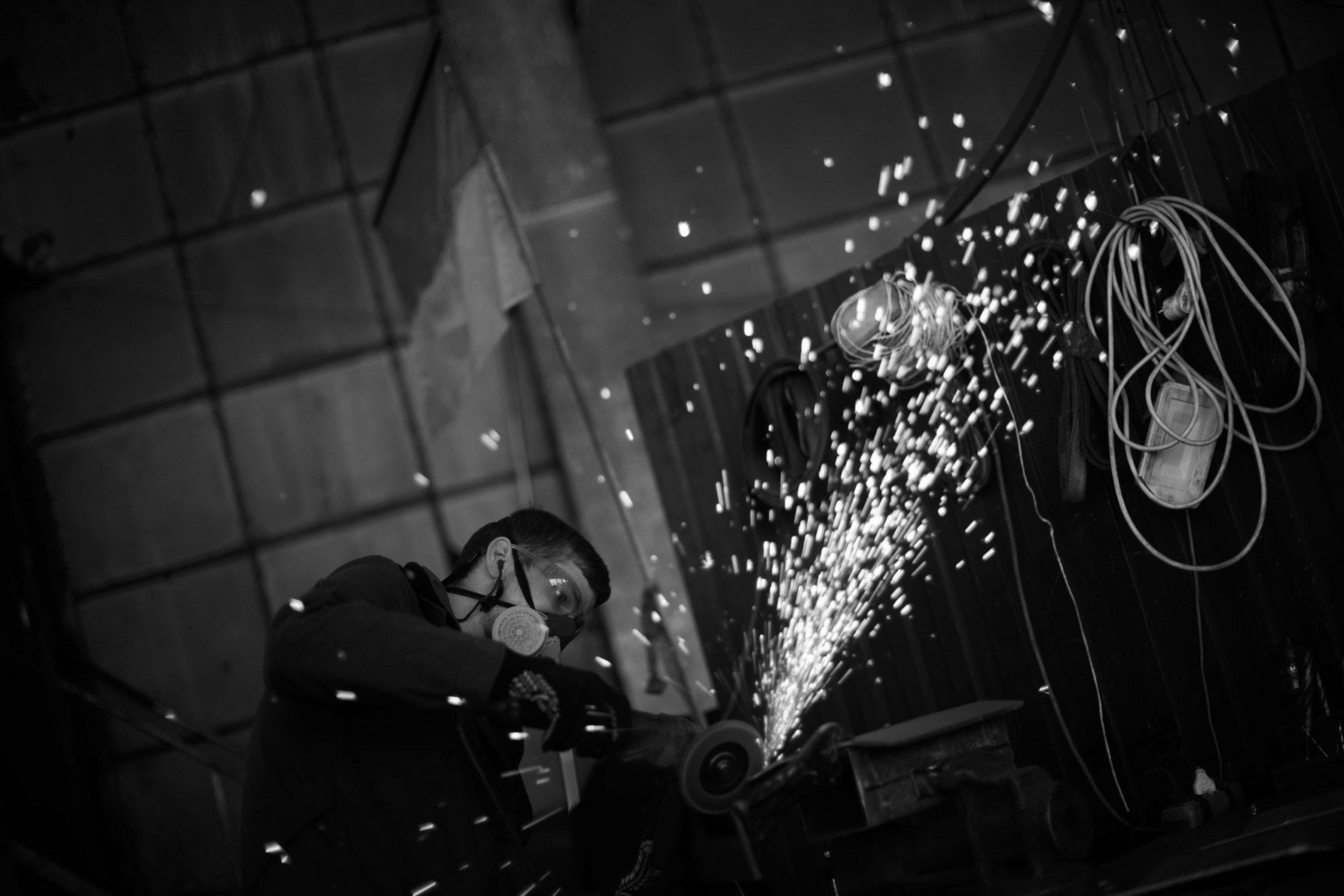Shield the physique: Ukraine volunteers craft armor, camouflage
Warning: Undefined variable $post_id in /home/webpages/lima-city/booktips/wordpress_de-2022-03-17-33f52d/wp-content/themes/fast-press/single.php on line 26

2022-05-09 09:16:18
#Shield #physique #Ukraine #volunteers #craft #armor #camouflage
ZAPORIZHZHIA, Ukraine (AP) — Sparks fly as a round saw slices into metallic, while welders close by work feverishly to the sound of blaring heavy steel. Upstairs, stitching machines clatter as ladies mark patterns on fabric being shaped into bulletproof vests.
An previous industrial advanced within the southeastern Ukrainian riverside metropolis of Zaporizhzhia has develop into a hive of activity for volunteers producing all the things from body armor and anti-tank obstacles to camouflage nets, transportable heating stoves and rifle slings for Ukrainian soldiers combating Russia’s invasion. One section focuses on autos, armor-plating some, converting others into ambulances. Another organizes food and medical deliveries.
With the front line about 50 kilometers (30 miles) from town, some sections of the operation, such because the stitching of bulletproof vests, are working around the clock in shifts to satisfy demand. Crowdfunding has brought in sufficient money to purchase steel from Sweden, Finland and Belgium, which is lighter than local steel, organizers say, a vital high quality for body armor.
The operation is the brainchild of local superstar Vasyl Busharov and his good friend Hennadii Vovchenko, who ran a furniture-making business. They named it Palianytsia, a sort of Ukrainian bread whose name many Ukrainians say cannot be pronounced properly by Russians.
The operation relies totally on volunteers, who now number more than 400 and come from all walks of life, from tailors to craftsmen to lawyers. Other than these concerned in production, there are additionally drivers delivering humanitarian aid and medical tools bought by donated funds.
“I really feel I am wanted here,” stated designer Olena Grekova, 52, taking a brief break from marking fabric for vests.
When Russia invaded on Feb. 24, she was in Thailand searching for inspiration for her spring collection. Initially, she stated, she wondered whether it was an indication from God that she shouldn’t return. Her husband and two grownup sons urged her not to.
“But I decided that I had to return,” she mentioned.
She had known Busharov for years. Arriving house on March 3, she gathered her gear the subsequent day and by March 5 was at Palianytsia. She’s been working there day-after-day since, bar one, sometimes even at evening.
Shifting from designing backless ballgowns to creating useful bulletproof vests was “a brand new expertise for me,” Grekova said. However she sought suggestions from soldiers for her designs, which have armor plates added. Now she is helping to produce several versions, including a prototype summer vest.
In one other section of the commercial complex, 55-year-old Ihor Prytula was busy making a new camouflage net, winding items of dyed cloth via a string frame. A furniture-maker by trade, he joined Palianytsia firstly of the conflict. He had some army expertise, he said, so it was straightforward to get feedback from soldiers on what they needed.
“We speak the identical language,” he stated.
For Prytula, the warfare is personal. His 27-year-old son was killed in late March as he helped evacuate folks from the northern town of Chernihiv.
“The battle and demise, it’s unhealthy, trust me, I do know this,” he mentioned. “It’s unhealthy, it’s tears, it’s sorrow.”
The call for volunteers went out as soon as the conflict started. Busharov introduced his project on Facebook on Feb. 25. The following day, 50 individuals turned up. “Subsequent day 150 folks, next day 300 people. ... And all together, we try (to) shield our city.”
They began out making Molovov cocktails in case Russian soldiers advanced on Zaporizhzhia. In 10 days, they produced 14,000, he mentioned. Then they turned to producing anti-tank obstacles referred to as hedgehogs — three massive metallic beams soldered together at angles — used as a part of the city’s defenses. Quickly, Busharov and Vovchenko stated, they found another urgent want: there weren’t enough bulletproof vests for Ukraine’s troopers.
But learning how to make something so specialized wasn’t simple.
“I wasn’t really related with the army in any respect,” stated Vovchenko. “It took two days and three sleepless nights to understand what needs to be executed.”
The group went through numerous forms of metal, making plates and testing them to examine bullet penetration. Some didn’t provide sufficient protection, others were too heavy to be functional. Then they'd a breakthrough.
“It turns out that steel used for automotive suspension has excellent properties for bullet penetration,” Vovchenko said, standing in entrance of four cabinets of test plates with various levels of bullet damage. The one made of automobile suspension steel showed dozens of bullet marks however none that penetrated.
The vests and every part else made at Palianytsia are provided free to troopers who request them, so long as they will prove they're within the military. Every plate is numbered and each vest has a label noting it is not for sale.
So far, Palianytsia has produced 1,800 bulletproof vests in two months, Busharov said, adding there was a ready record of around 2,000 extra from all over Ukraine.
Vovchenko stated they have heard about up to 300 individuals whose lives have been saved by the vests.
Figuring out that is “extremely inspiring and it keeps us going,” he said.
____
Inna Varenytsia in Zaporizhzhia, Ukraine, contributed.
___
Comply with all AP stories on the warfare in Ukraine at https://apnews.com/hub/russia-ukraine
Quelle: apnews.com